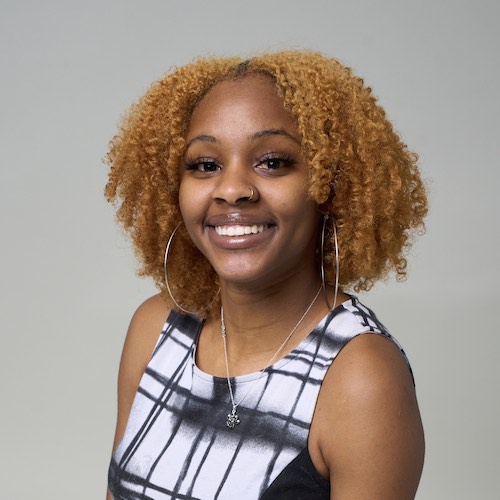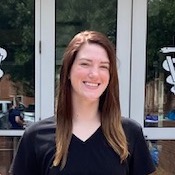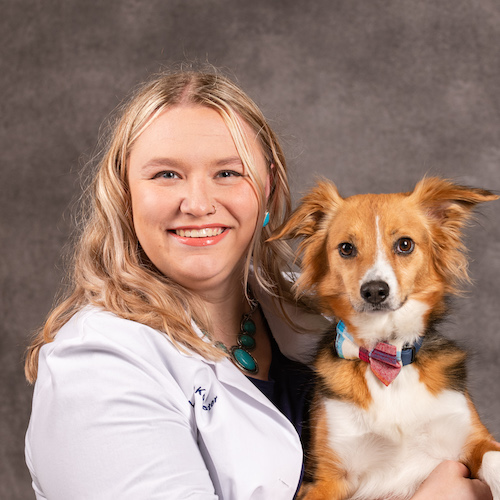Applying to veterinary school can be a daunting (& expensive process). But, don’t worry! We did a deep-dive into each veterinary school, what it’ll cost, acceptance rates, and debt information, to help you make an informed decision. And, on some, we even got to talk to actual students there about what life is like & what they would improve about their experience!
Before we jump into that, let’s look at the top 5 most affordable school & the 5 with the highest acceptance rates.
What’s the most affordable veterinary school?
When we think of affordability, there are a few different factors. First, resident tuition will always be cheaper. So it’s smart to try to get into schools in your state of residence, if applicable.
Second, tuition is only one piece of the puzzle. You’ll also need to factor in living expenses, fees, and other costs related to your attendance. With that in mind, we’ve split up affordability into 4 categories:
Most affordable resident tuition:
- North Carolina State University: $78,479
- Purdue University: $80,734
- University Of Georgia: $87,316
- Texas Tech University: $88,000
- Kansas State University: $91,184
Most affordable resident total cost:
- St. George’s University: $163,479
- Purdue University: $170,742
- Ross University: $175,372
- University Of Georgia: $181,227
- North Carolina State University: $182,627
Most affordable non-resident tuition:
- North Carolina State University: $106,520
- Texas Tech University: $131,200
- Washington State University: $135,271
- University Of Missouri-Columbia: $142,881
- The Ohio State University: $149,601
Most affordable non-resident total cost:
- St. George’s University: $163,479
- Ross University: $175,372
- North Carolina State University: $214,731
- Washington State University: $240,718
- Texas Tech University: $247,070
Which veterinary school is easiest to get into?
- Tuskegee University: 19.5% acceptance rate
- Western University: 17% acceptance rate
- Louisiana State University: 16.1% acceptance rate
- Texas A&M University: 14.7% acceptance rate
- Oklahoma State University: 13.1% acceptance rate
The full list:
Auburn University
Colorado State University
Cornell University
Iowa State University
Kansas State University
Lincoln Memorial University
Long Island University
Louisiana State University
Michigan State University
Midwestern University
Mississippi State University
North Carolina State University
Oklahoma State University
Oregon State University
Purdue University
Ross University
St. George’s University
Texas A&M University
Texas Tech University
The Ohio State University
Tufts University
Tuskegee University
University Of Arizona
University Of California
University Of Florida
University Of Georgia
University Of Illinois
University Of Minnesota
University Of Missouri-Columbia
University Of Pennsylvania
University Of Tennessee
University Of Wisconsin-Madison
Virginia-Maryland College Of Veterinary Medicine
Washington State University
Western University
Auburn University
📍 Auburn, Alabama
admissions statistics
Average class size: 131
# of applications: 1,217
Average GPA: 3.7
tuition & fees
resident
Total Tuition Cost: $102,960
Total Cost: $225,580
non-resident
Total Tuition Cost: $220,680
Total Cost: $360,356
debt information
Percentage of Indebted Graduates: 85.2%
Median Debt for Indebted Graduates: $165,315
what’s life like as a student?
What do you like most about your program?
I really enjoy the atmosphere of AUCVM. I know friends at other vet schools have said that their community can be really competitive and have a very "every man for himself" mentality, but I've had the exact opposite experience at Auburn.
Every class varies a little bit, but we very much operate as a team. We all share resources and study guides as we find and create them and are always eager to help one another. It's a really supportive community, both among classmates and clinicians, and it's really improved my vet school experience.
What are some areas for improvement?
Auburn focuses very heavily on didactic education and doesn't provide as much clinical experience as early on as other vet schools. I'm in my clinical year currently, and while I feel well prepared for my rotations in terms of working knowledge, I've been out of practice with my hands-on skills since starting vet school.
While club events can help provide more hands-on experience, it can get really tiring only working with animals from time to time. I wish there was more clinical experience incorporated into the didactic portion of our education.
What advice would you give to students looking at going here?
Everyone talks about how hard vet school is, but it's so hard to understand the challenges that come with being in such a rigorous program until you're already in it. Everyone looks for different things when applying to school: in-state versus out-of-state tuition; proximity to family and friends; tracking or non-tracking; the list goes on.
Don't forget to consider the community of the schools you apply to. Your classmates and faculty become your family from the second you start first year all the way through graduation and beyond. Things like tuition are very important, but don't forget to consider who you will end up working alongside for the next four years.
Tuskegee University
📍 Tuskegee, Alabama
🖥️ tuskegee.edu
admissions statistics
Average class size: 69
# of applications: 353
Average GPA: 3.5
tuition & fees
resident
Total Tuition Cost: $187,129
Total Cost: $312,186
non-resident
Total Tuition Cost: $187,129
Total Cost: $312,386
debt information
Percentage of Indebted Graduates: 100%
Median Debt for Indebted Graduates: $95,425
What do you like most about your program?
I love the Big/Little Program we have at TUCVM! Each incoming first year has the opportunity to request a “big”, who is a second year student that mentors them throughout vet school. It's helpful to have someone who already knows how the school operates and the best way to prepare for different courses or professors. Also, it’s inspirational to see what is in store for me next — one of the highlights of last school year was watching my big and the rest of the Class of 2024 receive their white coats!
I also love the diversity at TUCVM; we are the most racially diverse veterinary school in the United States. Being surrounded by classmates and professors who look like me has been invaluable in minimizing imposter syndrome. I have never felt like I don’t belong here.
What are some areas for improvement?
Clinical skills is an area with room for improvement. We had only a short time within our Clinical Skills course dedicated to hands-on learning. However, TUCVM has begun implementing some changes in the curriculum, so the classes behind us can have more hands-on experiences to apply didactic instruction.
Technology is another key area where advancements can be made. As a small, private school, Tuskegee has less funding compared to larger and/or state schools. But recent donations from alumni, corporations, and nonprofits have helped provide financial support to the CVM.
What advice would you give to students looking at going here?
I would recommend getting involved in different clubs on campus. It’s a great way to learn about different areas of veterinary medicine, make friends and professional connections, and take on leadership roles. If there’s a club you would like to see at Tuskegee that is not already active, take the initiative to start (or restart) it! That's something I did in restarting our Internal Medicine Club (Student Chapter of ACVIM).
Further advice for prospective students is to work in collaboration with your classmates! We all have the same goal to graduate and become successful doctors. Working together, sharing notes, resources, and opportunities is better than competing against each other.
Midwestern University
📍 Glendale, Arizona
admissions statistics
Average class size: 130
# of applications: 1,574
Average GPA: 3.6
tuition & fees
resident
Total Tuition Cost: $259,720
Total Cost: $453,669
non-resident
Total Tuition Cost: $259,720
Total Cost: $453,669
debt information
Percentage of Indebted Graduates: 99.0%
Median Debt for Indebted Graduates: $347,415
University Of Arizona
📍 Tucson, AZ
🖥️ arizona.edu
admissions statistics
Average class size: 107
# of applications: 1,783
Average GPA: 3.4
tuition & fees
resident
Total Tuition Cost: $141,657
Total Cost: $258,631
non-resident
Total Tuition Cost: $218,157
Total Cost: $347,574
debt information
Percentage of Indebted Graduates: N/A
Median Debt for Indebted Graduates: N/A
What do you like most about your program?
One of my favorite things is that we have an accelerated program that’s completed in 3 years, rather than the traditional 4 years of most programs. This allows you to get started in your career an entire year earlier!
I love that UACVM embraces diversity and inclusion within our program, but also finds ways to actively increase DEI and representation within the veterinary profession.
Finally, part of being a new program means that students have had the opportunity to constantly engage in dialogue, provide feedback, and help improve the curriculum via open communication with faculty and program directors—which is such an exciting opportunity and continually improves the experiences for the next class of students.
What are some areas for improvement?
One of the biggest areas for improvement would be the exotics curriculum. I think that we had very few opportunities to learn more about exotics in the same way that we learned about small or large animals.
Additionally, while I love the flexibility and real-world experiences provided with a distributive model clinical year, I think that there is a huge financial burden that comes with this model. Each month moving to various clinic locations can require additional costs for housing, transportation, food, car repairs, pet expenses, etc. This is something to consider when planning your clinical year.
What advice would you give to students looking at going here?
The biggest piece of advice I can give to students within this program, despite sounding cliché is that—you really do get out of it what you’re willing to put in! This program is not a lecture-based program but rather is based on the concept of team-based learning (TBL). This means you spend most of your day collaborating with your team members to work through cadavers, cases, and group projects. Your success within the program is dependent on your ability to not only learn the material, but also how well you work with others around you.
Putting egos aside and recognizing that everyone has strengths, weaknesses, and lifting up the people around you is something that will take you far—as a student but also as someone entering this profession. I think this model of learning is most like the reality of the workplace where you will need to speak up, participate, and work with people from all different backgrounds. Being a team player is absolutely essential to your success!
University Of California
📍 Davis, California
admissions statistics
Average class size: 150
# of applications: 1,199
Average GPA: 3.3
tuition & fees
resident
Total Tuition Cost: $132,100
Total Cost: $289,597
non-resident
Total Tuition Cost: $181,080
Total Cost: $345,674
debt information
Percentage of Indebted Graduates: 69.0%
Median Debt for Indebted Graduates: $150,396
Western University Of Health Sciences
📍 Pomona, California
admissions statistics
Average class size: 109
# of applications: 641
Average GPA: 3.3
tuition & fees
resident
Total Tuition Cost: $223,102
Total Cost: $370,983
non-resident
Total Tuition Cost: $223,102
Total Cost: $370,983
debt information
Percentage of Indebted Graduates: 87.9%
Median Debt for Indebted Graduates: $312,620
What do you like most about your program?
Our curriculum is SO unique!! Like every university curriculum, it has its pros and cons, but overall works really well.
From the very first day, the problem-based learning (PBL) curriculum starts teaching us how to actually work through cases from learning to prioritize important facts, problems, work through differentials, and come up with plans and next steps - it's not just memorizing a ton of information (I mean yes, but also) it's actually learning information not just for exams, but for life too. In addition, we also work with live animals from our very first block because we do rotations through the on-campus clinic and the mobile low-cost clinic, and we visit a local barn for large animal experience too.
Honorable mentions: Southern CA has so much to offer! Campus is close to beaches, LA, and Disneyland, there's a lot of racial diversity in each class, and there's a super close-knit and supportive class environment since our curriculum forces us to be so close to our classmates.
What are some areas of improvement?
Honestly - inconsistency in communication between faculty and students, depending on the faculty member. Many faculty members are open to talking to students and hearing whatever feedback they have about the curriculum, changes, and concerns, but not every single faculty member is the most receptive or action-driven, so you have to be familiar with which faculty members to talk to to really feel heard.
What advice would you give to students looking at going here?
The curriculum really works... if you let it. Don't resist the methods! This curriculum is the definition of student-centered learning and really puts you in the driver's seat and teaches you how to be independent.
You need help finding resources? The help is there, but you have to have the self-discipline to reach out.
Not succeeding solo-studying? Create your own friend groups and study groups. Because it's so student-centered, the most important thing is that you need to find what works best for YOU and sometimes figuring that out can take time - you definitely won't have it down the first week, or even month.
Colorado State University
📍 Fort Collins, Colorado
admissions statistics
Average class size: 156
# of applications: 4,128
Average GPA: 3.6
tuition & fees
resident
Total Tuition Cost: $155,295
Total Cost: $269,863
non-resident
Total Tuition Cost: $250,200
Total Cost: $378,518
debt information
Percentage of Indebted Graduates: 84.6%
Median Debt for Indebted Graduates: $179,367
what’s life like as a student?
What do you like most about your program?
Colorado State University is an amazing place for any student who wants to enjoy the outdoors while getting an amazing education rooted in both science and medicine which is seldom found many other places.
It is the plethora of opportunities to further your education in both of the aforementioned areas of science and medicine which make this program unique. I was fortunate enough to take advantage of one of the dual-degree programs here as I wrap up a Masters in Animal Science w/ a concentration in Ruminant Nutrition, which has allowed me to understand the full breadth of what veterinarians do both in and out of the clinical environment.
It is due to experiences such as those dual-degree programs which allow CSU to maintain its status as a pillar in the veterinary research community which is a tremendous advantage. While those are things that directly impact me, more importantly, the veterinary school has continued to innovate and be forward-thinking in all areas, which brings me hope for those coming after me; this includes a $300 million expansion to our veterinary hospital and a complete curriculum renewal which will create "day one" ready veterinarians to fulfill the needs in our industry.
Colorado State continues to trend towards incorporating more positive well-being practices while maintaining quality education which makes me extremely proud to be a Ram.
What are some areas for improvement?
There is a shared area of improvement for all universities, including my own, and that is the area of diversity and inclusion or rather lack thereof which is contributing to the veterinary shortage around the country. It's not enough nor has it ever been to simply ask a statement about diversity in the application or to mention it during orientation; DEI has to be put into practice in a way that benefits everyone.
I am currently the only black man at the veterinary school here at Colorado State; there are no black faculty members either, which negatively impacts my experience but drives me to push for more diversity in this space. This doesn't mean that CSU isn't trying, we've had our most diverse class in the history of the institution since 1907 this year, but as we continue to grow, we have to continue the trend of not just accepting students from marginalized backgrounds, we have to support them while they're here.
Our peer institutions have implemented steps that demonstrate this perfectly through the inclusion of required diversity credits for every student, alumni mentorship for students from marginalized backgrounds or even doing community service in areas that are negatively impacted by the stigma surrounding the least diverse health profession in the country.
Colorado State isn't there yet, but they can be, and I know that just as most institutions in the country, they are trying to be.
What advice would you give to students looking at going here?
Attempting to gain entry into any veterinary institution is tough, CSU gets more applications than just about any other school, which statistically makes it even tougher, but not impossible.
My biggest advice is to relax more, stress less, and build your mind for veterinary school. It's not all about grades, although they are a big factor, it's about who you are. There's an unpopular opinion I often share with pre-vet students, "Veterinary medicine is a job, not your life (even though it seems that way sometimes), you are more than that organic chemistry grade or how many pre-vet meetings you go to, and no one cares how good of a veterinarian you are if you're not a good person."
I say these things not to be mean; pre-vet clubs across the country have their place in connecting you with like-minded people; however, when it comes to admissions and life, I would encourage you to venture outside and find your passion beyond animals. Continue to ask yourself a few questions. How do I care for myself? How do I care for people? How do I care for the environment around me? These are the pillars of a well-rounded good veterinarian and student.
Make sure you're going out to do that monthly hike, you're getting involved in advocacy, or even sitting down with your grandmother and asking her about her childhood. Veterinary school requires mental fortitude and not just due to the heavy workload, but because your mental health will be stretched in every way imaginable; don't be a stagnant student because if you're anything like me, you don't want to go to a stagnant school.
University Of Florida
📍 Gainesville, Florida
admissions statistics
Average class size: 130
# of applications: 1,922
Average GPA: 3.7
tuition & fees
resident
Total Tuition Cost: $115,160
Total Cost: $248,051
non-resident
Total Tuition Cost: $182,000
Total Cost: $324,576
debt information
Percentage of Indebted Graduates: 73.5%
Median Debt for Indebted Graduates: $143,720
What do you like most about your program?
What I like most about my program is the support received from the faculty and staff because I firmly believe that sets the foundation. It has formed a nurturing environment that has allowed me to feel a sense of comfortability, calmness, and love in a pre-established stressful environment due to grades and exams.
I also love UFCVM’s Aquatic Animal Health Certificate program. Although other veterinary colleges offer certificate programs, UFCVM is the only veterinary college that offers this certificate program. It was one of the deciding factors in me ultimately committing to UFCVM, as it is for many other students as well. As a student enrolled in courses offered in the program, I have gained knowledge and an introduction to aquatic animal medicine. It has also helped me form new skills concentrated on animals I would like to build a career around one day such as marine mammals, fish, aquatic invertebrates. Upon completion the program will increase the likelihood of my success in aquatics internships, residencies, and veterinary positions that include aquatic animal care.
What are some areas for improvement?
As a kinesthetic learner, I would have liked to have gained early exposure by the incorporation of a few “engaging group days” per semester. Split into groups students would be allowed to get hands-on experience in different departments throughout UF Small Animal Hospitals and Large Animal Hospitals that aligns with on some of the courses they are taking such as Respiration, Reproduction, Cardiology, Parasitology and many more.
This incorporation would be done with hopes to further enhance what we learned in the classroom as 1st year veterinary students. It also would allow students to be more confident in their capabilities of what is being presented to them in the classroom.
What advice would you give to students looking at going here?
I would say utilize the pre-veterinary resources UFCVM Admissions offers early on, they were my best friend as a pre-vet student!
Some resources I utilized were the PreVet Pawscast that gave me tons of advice on how to perfect my application, tips on interviews, and knowledge in different veterinary career fields. They also have a Pre-Vet Tool Kit that includes an interview prep e-book which was helpful while preparing for my interview as well as other pre-vet essentials.
There is also an Instagram and YouTube page that provides virtual tours, advice from current veterinary students & admissions, and the life behind the scenes of veterinary school at UFCVM!
University Of Georgia
📍 Athens, Georgia
🖥️ vet.uga.edu
admissions statistics
Average class size: 150
# of applications: 1,360
Average GPA: 3.7
tuition & fees
resident
Total Tuition Cost: $87,316
Total Cost: $181,227
non-resident
Total Tuition Cost: $203,185
Total Cost: $313,884
debt information
Percentage of Indebted Graduates: 71.7%
Median Debt for Indebted Graduates: $138,167
University Of Illinois
📍 Urbana, Illinois
admissions statistics
Average class size: 135
# of applications: 2,039
Average GPA: 3.7
tuition & fees
resident
Total Tuition Cost: $123,926
Total Cost: $226,315
non-resident
Total Tuition Cost: $212,216
Total Cost: $327,397
debt information
Percentage of Indebted Graduates: 81.9%
Median Debt for Indebted Graduates: $203,311
Purdue University
📍 West Lafayette, Indiana
admissions statistics
Average class size: 87
# of applications: 1,537
Average GPA: 3.7
tuition & fees
resident
Total Tuition Cost: $80,734
Total Cost: $170,742
non-resident
Total Tuition Cost: $180,089
Total Cost: $284,492
debt information
Percentage of Indebted Graduates: 86.4%
Median Debt for Indebted Graduates: $131,553
Iowa State University
📍 Ames, Iowa
admissions statistics
Average class size: 162
# of applications: 1,967
Average GPA: 3.6
tuition & fees
resident
Total Tuition Cost: $110,352
Total Cost: $192,405
non-resident
Total Tuition Cost: $222,324
Total Cost: $320,601
debt information
Percentage of Indebted Graduates: 86.2%
Median Debt for Indebted Graduates: $146,796
Kansas State University
📍 Manhattan, Kansas
admissions statistics
Average class size: 118
# of applications: 1,496
Average GPA: 3.5
tuition & fees
resident
Total Tuition Cost: $91,184
Total Cost: $188,952
non-resident
Total Tuition Cost: $206,043
Total Cost: $320,453
debt information
Percentage of Indebted Graduates: 81.7%
Median Debt for Indebted Graduates: $191,907
Louisiana State University
📍 Baton Rouge, Louisiana
admissions statistics
Average class size: 120
# of applications: 746
Average GPA: 3.7
tuition & fees
resident
Total Tuition Cost: $109,127
Total Cost: $242,917
non-resident
Total Tuition Cost: $225,527
Total Cost: $376,182
debt information
Percentage of Indebted Graduates: 79.5%
Median Debt for Indebted Graduates: $191,580
What do you like most about your program?
The support of the faculty/staff and the environment at LSU. LSU SVM also has various opportunities for hands on experience through wet labs, clubs, and clinical skills which I find very helpful as a vet student.
What are some areas for improvement?
LSU has a great reputation for graduates that have a lot of clinical expertise. The time we have in clinical skills could be increased to allow us more opportunity to improve these skills. I do believe the new curriculum that is officially launching this fall addresses this.
What advice would you give to students looking at going here?
Network and reach out to everyone in the vet community here. For some people it may feel uncomfortable, but this is the time to get out of your comfort zone! Everyone here is rooting for you to succeed in the program and even after you graduate.
Tufts University
📍 North Grafton, Massachusetts
admissions statistics
Average class size: 103
# of applications: 1,109
Average GPA: 3.8
tuition & fees
resident
Total Tuition Cost: $203,939
Total Cost: $350,701
non-resident
Total Tuition Cost: $203,939
Total Cost: $381,410
debt information
Percentage of Indebted Graduates: 80.4%
Median Debt for Indebted Graduates: $222,864
Michigan State University
📍 East Lansing, Michigan
🖥️ cvm.msu.edu
admissions statistics
Average class size: 115
# of applications: 2,114
Average GPA: 3.4
tuition & fees
resident
Total Tuition Cost: $138,666
Total Cost: $252,436
non-resident
Total Tuition Cost: $238,967
Total Cost: $367,270
debt information
Percentage of Indebted Graduates: 88.6%
Median Debt for Indebted Graduates: $177,326
University Of Minnesota
📍 Saint Paul, Minnesota
🖥️ cvm.umn.edu
admissions statistics
Average class size: 126
# of applications: 1,192
Average GPA: 3.7
tuition & fees
resident
Total Tuition Cost: $140,231
Total Cost: $265,242
non-resident
Total Tuition Cost: $252,056
Total Cost: $393,269
debt information
Percentage of Indebted Graduates: 81.4%
Median Debt for Indebted Graduates: $194,648
Mississippi State University
📍 Mississippi State, Mississippi
admissions statistics
Average class size: 114
# of applications: 1,319
Average GPA: 3.5
tuition & fees
resident
Total Tuition Cost: $106,896
Total Cost: $210,861
non-resident
Total Tuition Cost: $191,696
Total Cost: $307,947
debt information
Percentage of Indebted Graduates: 88.6%
Median Debt for Indebted Graduates: $169,759
University Of Missouri-Columbia
📍 Columbia, Missouri
admissions statistics
Average class size: 126
# of applications: 1,725
Average GPA: 3.8
tuition & fees
resident
Total Tuition Cost: $107,596
Total Cost: $217,561
non-resident
Total Tuition Cost: $142,881
Total Cost: $257,958
debt information
Percentage of Indebted Graduates: 86.2%
Median Debt for Indebted Graduates: $164,222
what’s life like as a student?
What do you like most about your program?
My favorite aspect of student life at University of Missouri is the approachability of the faculty members throughout didactic curriculum. During my undergrad experience at Mizzou, none of my professors knew my name, let alone who I was.
At Missouri CVM, the vast majority of instructors know most students personally on a first-name basis and are incredibly accommodating in hopes to see students succeed. Whether it be reaching out to meet one-on-one after a tough exam, sending weekly check-in emails to ensure our emotional well-being, tutoring in the anatomy lab on weekends, or hosting exam reviews after-hours -- faculty members are always there to ensure our success throughout our rigorous coursework and beyond.
What are some areas for improvement?
Most well-established veterinary schools implement hands-on skill assessments throughout didactic curriculum, often termed Objective Structured Clinical Examinations or (OSCEs).
Although Missouri CVM does sprinkle in clinical skills throughout our didactic curriculum, there is no standardized grading system to ensure mastery of such skills, some as simple as removing a scalpel from a scalpel blade.
As a student member of our CVM's curriculum committee, we are already taking steps towards implementation of standardized clinical skill evaluation in the near future!
What advice would you give to students looking at going here?
My #1 tip for those looking to attend Missouri CVM (and any veterinary school honestly) is to not be afraid to use your resources and ask for help-- whether it be academically or mentally.
Both our faculty members and full-time counselors at the CVM are invaluable resources I would encourage you to take full advantage of. Be proactive! Our faculty and staff is always there to help you succeed in any way you see fit throughout the rigors of veterinary curriculum.
Cornell University
📍 Ithaca, New York
admissions statistics
Average class size: 126
# of applications: 1,828
Average GPA: 3.8
tuition & fees
resident
Total Tuition Cost: $146,102
Total Cost: $256,572
non-resident
Total Tuition Cost: $217,323
Total Cost: $338,122
debt information
Percentage of Indebted Graduates: 73.7%
Median Debt for Indebted Graduates: $162,000
Long Island University
📍 Brookville, NY
admissions statistics
Average class size: 109
# of applications: 1,058
Average GPA: 3.6
tuition & fees
resident
Total Tuition Cost: $224,400
Total Cost: $535,808
non-resident
Total Tuition Cost: $224,000
Total Cost: $535,808
debt information
Percentage of Indebted Graduates: N/A
Median Debt for Indebted Graduates: N/A
North Carolina State University
📍 Raleigh, North Carolina
🖥️ cvm.ncsu.edu
admissions statistics
Average class size: 99
# of applications: 1,963
Average GPA: 3.7
tuition & fees
resident
Total Tuition Cost: $78,479
Total Cost: $182,627
non-resident
Total Tuition Cost: $106,520
Total Cost: $214,731
debt information
Percentage of Indebted Graduates: 80.8%
Median Debt for Indebted Graduates: $140,367
what’s life like as a student?
What do you like most about your program?
What I like the most about the program is that there is an array of resources and opportunities available to us and I always feel supported by the faculty and staff.
What are some areas for improvement?
An area of improvement for the program is increasing the diversity and representation of the faculty — especially having more people of color.
What advice would you give to students looking at going here?
The advice I would give to a student looking to attend NC State’s DVM program is to be open to new ideas and experiences. You will be surrounded by people from all different walks of life and it is important that you are able to learn from one another and learn new perspectives. Also, be willing to work hard, there are many resources here to help you succeed you just have to be willing to use them to your advantage!
The Ohio State University
📍 Columbus, Ohio
🖥️ vet.osu.edu
admissions statistics
Average class size: 165
# of applications: 2,482
Average GPA: 3.4
tuition & fees
resident
Total Tuition Cost: $149,601
Total Cost: $269,032
non-resident
Total Tuition Cost: $149,601
Total Cost: $424,468
debt information
Percentage of Indebted Graduates: 89.2%
Median Debt for Indebted Graduates: $194,417
Oklahoma State University
📍 Stillwater, Oklahoma
admissions statistics
Average class size: 106
# of applications: 810
Average GPA: 3.6
tuition & fees
resident
Total Tuition Cost: $95,450
Total Cost: $231,531
non-resident
Total Tuition Cost: $200,140
Total Cost: $351,389
debt information
Percentage of Indebted Graduates: 83.0%
Median Debt for Indebted Graduates: $156,871
what’s life like as a student?
What do you like most about your program?
One of the things that I love most about our program is that every incoming first year student is paired with someone from the previous year’s class as a mentor. It’s so great going into a new environment to already have a built-in support system and someone trustworthy that you can go to with any questions! It really helps build that sense of community early on in the program and I know it gave me a lot of reassurance as a first year!
What are some areas for improvement?
I would say that an area for improvement would be our clinical skills. During the first two years of the program, classroom work is the focus. During third year, you make the jump into learning surgical skills without first making sure that everyone has already learned the “basics” such as catheter placement, blood draws, etc. Fortunately, they are addressing this beginning this fall with our new curriculum being put in place, with a clinical skills lab being required for incoming first years in the program from here on out! So excited to see this change take place at our school!
What advice would you give to students looking at going here?
At this school, you get to know your classmates well and form close connections, even with people from other class years in the program. Students are genuine and want each other to succeed. It’s not a cutthroat competitive environment, but instead a supportive atmosphere where you feel like everyone is trying to help each other achieve our goals of becoming the best doctors we can be! My advice is to truly be yourself and to push yourself outside of your comfort zone with extracurriculars, study groups, and/or elective classes. You will absolutely succeed here if you embrace that mentality! We’re really all in this to learn and grow together!:)
Oregon State University
📍 Corvallis, Oregon
admissions statistics
Average class size: 79
# of applications: 1,798
Average GPA: 3.6
tuition & fees
resident
Total Tuition Cost: $107,432
Total Cost: $214,799
non-resident
Total Tuition Cost: $206,177
Total Cost: $327,851
debt information
Percentage of Indebted Graduates: 80.4%
Median Debt for Indebted Graduates: $164,116
University Of Pennsylvania
📍 Philadelphia, Pennsylvania
admissions statistics
Average class size: 137
# of applications: 1,546
Average GPA: 3.6
tuition & fees
resident
Total Tuition Cost: $202,506
Total Cost: $360,816
non-resident
Total Tuition Cost: $242,506
Total Cost: $406,612
debt information
Percentage of Indebted Graduates: 76.7%
Median Debt for Indebted Graduates: $249,071
University Of Tennessee
📍 Knoxville, Tennessee
🖥️ vet.utk.edu
admissions statistics
Average class size: 89
# of applications: 1,607
Average GPA: 3.7
tuition & fees
resident
Total Tuition Cost: $116,716
Total Cost: $239,479
non-resident
Total Tuition Cost: $226,320
Total Cost: $364,963
debt information
Percentage of Indebted Graduates: 87.2%
Median Debt for Indebted Graduates: $168,667
Lincoln Memorial University
📍 Harrogate, Tennessee
🖥️ lmunet.edu
admissions statistics
Average class size: 130
# of applications: 1,825
Average GPA: 3.5
tuition & fees
resident
Total Tuition Cost: $189,684
Total Cost: $326,641
non-resident
Total Tuition Cost: $189,684
Total Cost: $326,641
debt information
Percentage of Indebted Graduates: 90.7%
Median Debt for Indebted Graduates: $296,345
what’s life like as a student?
What do you like most about your program?
The close-knit atmosphere and distributive clinical year model of Lincoln Memorial University really make the school shine. Professors are always more than willing to lend a hand and will take time out of their own days to work with students one on one.
Both professors and administration know students by name and are easily reachable. We get to be hands-on with animals from our first semester thanks to our on-site dairy and equine herds and dogs brought in from local shelters. When we can’t use live animals, our innovative model shop team works to allow us to practice skills such as spays, castrations, vessel ligation, equine endoscopy, and more.
Because the school does not have a teaching hospital, LMU partners with hundreds of veterinary practices around the country, allowing students to “build their own adventure” as far as their clinical year. This allows students to focus on what they’re passionate about, get real-world experience, and potentially job offers.
What advice would you give to students looking at going here?
Lincoln Memorial is located in the heart of Appalachia, with endless views and adventures for nature lovers. The small-town atmosphere and local businesses really make the area unique but can come as a culture shock to students coming from larger cities. Expect to drive a little over an hour to the nearest big city of Knoxville, TN.
I would highly recommend touring the school and checking out the area before committing if possible. My tour is what made me fall in love with LMU, but as a rural Indiana native, it felt a lot like home.
Texas A&M University
📍 College Station, Texas
admissions statistics
Average class size: 174
# of applications: 1,185
Average GPA: 3.8
tuition & fees
resident
Total Tuition Cost: $99,929
Total Cost: $211,018
non-resident
Total Tuition Cost: $153,809
Total Cost: $272,704
debt information
Percentage of Indebted Graduates: 63.2%
Median Debt for Indebted Graduates: $143,724
Texas Tech University
📍 Amarillo, Texas
admissions statistics
Average class size: 88
# of applications: 864
Average GPA: 3.4
tuition & fees
resident
Total Tuition Cost: $88,000
Total Cost: $197,611
non-resident
Total Tuition Cost: $131,200
Total Cost: $247,070
debt information
Percentage of Indebted Graduates: N/A
Median Debt for Indebted Graduates: N/A
Virginia-Maryland College Of Veterinary Medicine
📍 Blacksburg, Virginia
admissions statistics
Average class size: 124
# of applications: 1,899
Average GPA: 3.3
tuition & fees
resident
Total Tuition Cost: $100,629
Total Cost: $212,845
non-resident
Total Tuition Cost: $215,529
Total Cost: $344,393
debt information
Percentage of Indebted Graduates: 78.9%
Median Debt for Indebted Graduates: $172,369
Washington State University
📍 Pullman, Washington
admissions statistics
Average class size: 131
# of applications: 2,054
Average GPA: 3.7
tuition & fees
resident
Total Tuition Cost: $102,040
Total Cost: $202,673
non-resident
Total Tuition Cost: $135,271
Total Cost: $240,718
debt information
Percentage of Indebted Graduates: 73.8%
Median Debt for Indebted Graduates: $118,230
University Of Wisconsin-Madison
📍 Madison, Wisconsin
admissions statistics
Average class size: 96
# of applications: 1,914
Average GPA: 3.7
tuition & fees
resident
Total Tuition Cost: $122,690
Total Cost: $253,590
non-resident
Total Tuition Cost: $194,383
Total Cost: $335,671
debt information
Percentage of Indebted Graduates: 83.3%
Median Debt for Indebted Graduates: $143,752
Ross University
📍 St Kitts
admissions statistics
Average class size: 215
# of applications: 1,791
Average GPA: 3.3
tuition & fees
resident
Total Tuition Cost: N/A
Total Cost: $175,372
non-resident
Total Tuition Cost: $219,152
Total Cost: $175,372
debt information
Percentage of Indebted Graduates: 85.4%
Median Debt for Indebted Graduates: $315,010
St.George’s University
📍 Grenada, West Indies
🖥️ sug.edu
admissions statistics
Average class size: 126
# of applications: 1,199
Average GPA: 3.3
tuition & fees
resident
Total Tuition Cost: N/A
Total Cost: $163,479
non-resident
Total Tuition Cost: $185,134
Total Cost: $163,479
debt information
Percentage of Indebted Graduates: 80.8%
Median Debt for Indebted Graduates: $301,695




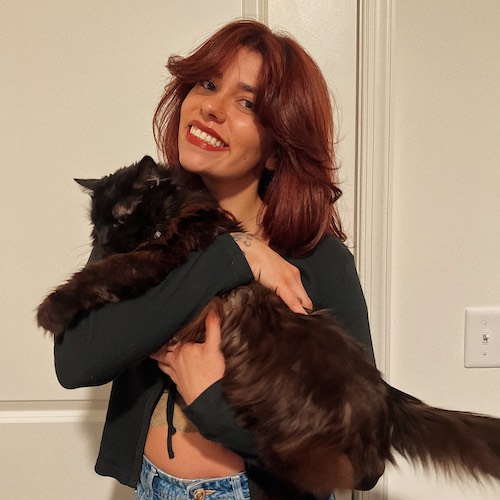
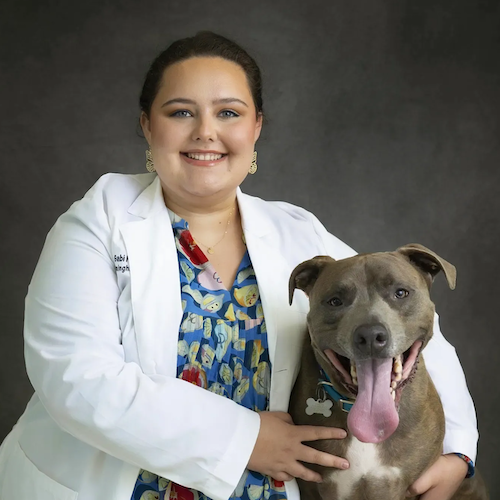
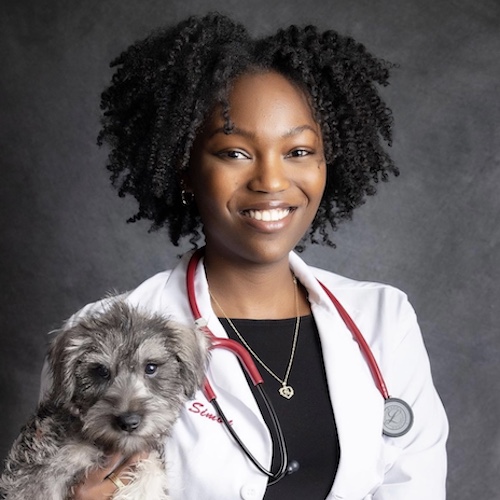

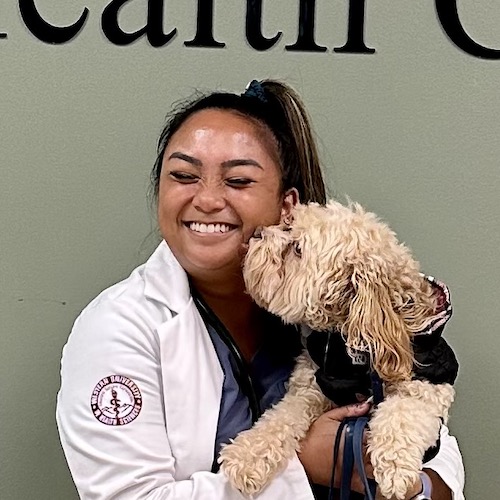

.jpeg)


